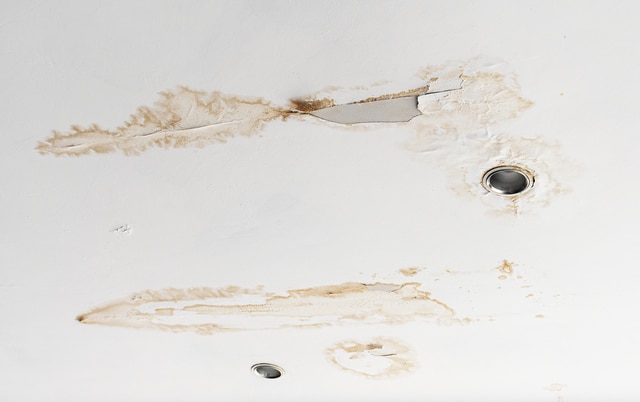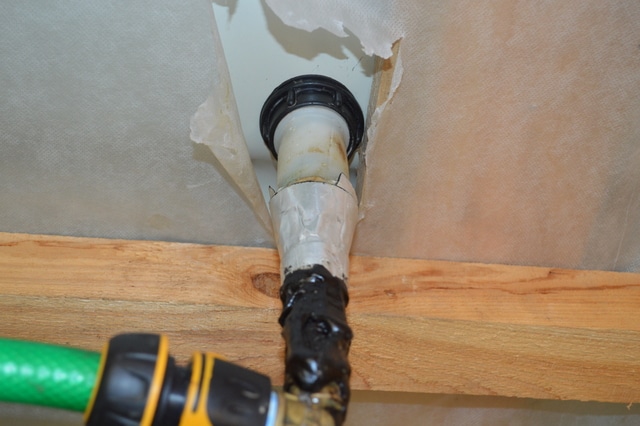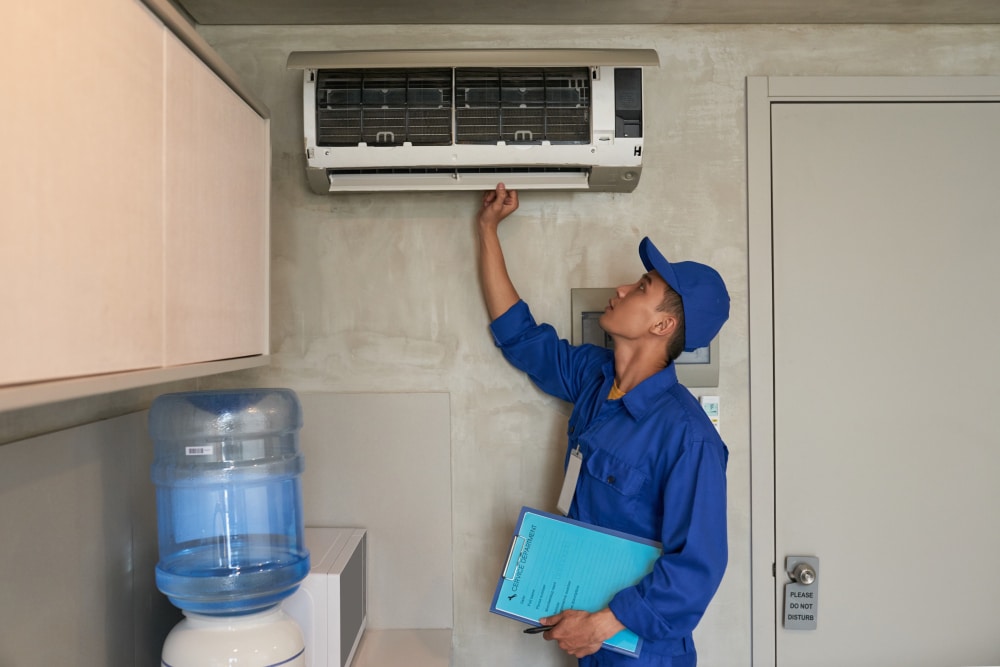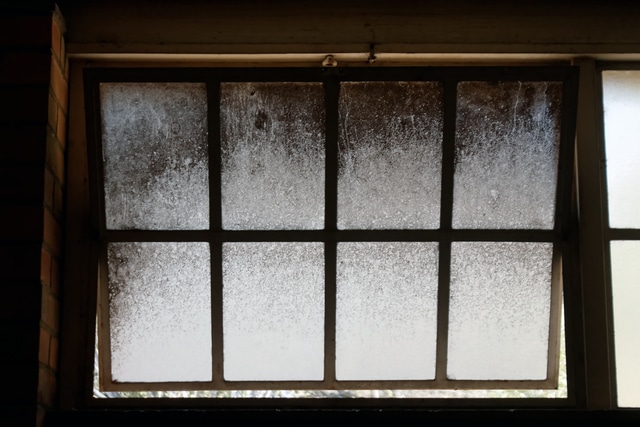It’s a scene no homeowner wants to wake up to—water damage bedroom ceiling causing a mysterious dark stain to form, or worse, a droplet of water landing on your face in the middle of the night. Water damage in the ceiling isn’t just unsightly; it can pose a serious threat to the structural integrity of your home and the health of everyone inside.
In Australia, where our weather swings from dry heatwaves to sudden storms, water damage is more common than many realise. The bedroom, often the most personal and comfortable space in the home, can fall victim to hidden leaks and moisture problems that quietly build up until they become major repairs.
In this article, we’ll dive into the top five causes of water damage in bedroom ceilings and share practical tips on how to prevent these problems before they leave you dealing with mould, rot, or even a collapsed ceiling.

1. Roof Leaks
ure class="wp-block-image size-full">
The most common source of ceiling water damage is a leaky roof. In many Aussie homes, especially those with tiled or older metal roofs, wear and tear from the elements can easily cause trouble. High winds, heavy rain, hail, and even prolonged sun exposure can lead to broken tiles, rusted sheets, or cracked flashing—creating perfect entry points for water.
Sometimes the issue is as simple as a clogged gutter causing water to overflow back under the eaves and into the ceiling cavity. Other times, it’s more serious, such as damage to the roof membrane or poor sealing around vents and skylights.
Prevention Tips:
- Schedule regular roof inspections, particularly after storms or the change of seasons.
- Clear gutters and downpipes of debris like leaves and twigs at least twice a year.
- Replace any broken or missing roof tiles promptly.
- Ensure flashing and roof seals are intact and professionally installed.
A well-maintained roof is your ceiling’s first line of defence against water damage.
2. Bu>2. Burst or Leaking Pipes Causing Water Damage in Bedroom Ceilings
ass="wp-block-image size-full">
Pipes running through ceiling cavities are another major culprit, especially in multi-storey homes where upstairs bathrooms, ensuites, or laundry rooms sit above bedrooms. A small leak from a pipe joint or valve can go unnoticed for weeks or even months, slowly saturating insulation and ceiling plasterboard until damage becomes visible.
Old plumbing systems, particularly in houses built decades ago, are prone to corrosion and failure. Even newer systems can burst due to pressure fluctuations or freezing temperatures in colder regions.
Prevention Tips:
- Have a licensed plumber inspect your plumbing every couple of years.
- Install a water pressure regulator if pressure surges are a concern in your area.
- Be on the lookout for small warning signs like reduced water pressure or unusual dripping noises.
- Know where your water main shut-off valve is located in case of emergency.
Catching plumbing problems early can save you from costly ceiling repairs and water damage restoration.
3. Fa>3. Faulty Air Conditioning or HVAC Systems
ass="wp-block-image size-full">
In many Australian homes, ceiling-mounted air conditioning units are common, especially in bedrooms. While these systems help keep things cool during the summer, they can sometimes become a hidden source of water damage bedroom ceiling when they malfunction.
Condensation can build up in or around the unit, especially if filters are blocked or drainage lines are clogged. If water backs up or leaks inside the roof cavity, it can soak into the ceiling, creating damp patches or even leading to sagging panels.
Prevention Tips:
- Have your air conditioning units professionally serviced at least once a year.
- Make sure condensate drain lines are clear and functioning properly.
- Install a drip tray beneath ceiling-mounted units if one isn’t already in place.
- Keep filters clean to reduce system strain and improve airflow.
Regular maintenance ensures your cooling system helps you sleep better without leaving a soggy mess above your bed.
4. Poor>4. Poor Ventilation and Condensation
s="wp-block-image size-full">
It might surprise you, but not all ceiling water damage comes from leaks. Inadequate ventilation can also be a big problem, particularly in bedrooms that have ensuite bathrooms or are kept shut during the day.
When warm, moist air can’t escape, it condenses on cooler surfaces—like the underside of your ceiling. Over time, this can lead to mildew, mould, and even structural decay. This issue is more common in cooler climates or during winter, when indoor heating increases the contrast between inside and outside temperatures.
Prevention Tips:
- Use exhaust fans in bathrooms and leave bedroom doors open where possible to allow air circulation.
- Open windows regularly to let in fresh air and reduce indoor humidity.
- Consider installing a dehumidifier in particularly humid or poorly ventilated rooms.
- Check that roof insulation and vapour barriers are installed correctly.
Good airflow is not only healthier but helps preserve the integrity of your ceiling.
5. Structur>5. Structural Issues or Poor Construction
e problem lies not in weather or wear, but in how the house was built. Poor workmanship during construction or renovation can lead to ongoing water issues that slowly manifest in your ceiling.Improperly installed waterproofing membranes, inadequate sealing around roof penetrations, or lack of insulation can all contribute to water ingress. This is especially true for extensions or DIY projects where standards may not match those of licensed trades.
Prevention Tips:
- Always hire licensed and insured professionals for renovations and repairs.
- Get a building inspection if you suspect poor construction in an existing home.
- Check that waterproofing and flashing are correctly installed, especially in wet areas above or near bedrooms.
- Don’t ignore minor signs—if something seems off, investigate before it escalates.
Cutting corners in construction can end up costing more than doing it right the first time.
When to Call a >When to Call a Professional for Water Damage Bedroom Ceiling Repairs
ock-image size-large is-resized">
If you notice a wet patch, discolouration, or sagging in your bedroom ceiling caused by water damage, don’t delay. Water damage bedroom ceiling won’t fix itself—and the longer you wait, the more extensive (and expensive) the repair will be.
Signs you need a professional:
- Visible mould or mildew on the ceiling.
- A ceiling that feels soft to the touch or is starting to sag.
- Recurring stains, even after patching or painting.
- Strong musty smells in the bedroom.
Professionals like Perth Ceiling and Walls offer specialised services in ceiling inspection, repair, and water damage restoration. Getting expert help ensures the problem is diagnosed accurately and fixed permanently.
Conclusion: Protecting Your H>Conclusion: Protecting Your Home from Water Damage Bedroom Ceiling Issues
droom ceiling isn’t just an inconvenience—it’s a warning sign that something in your home needs urgent attention. Whether it’s a roof leak, burst pipe, or poor ventilation, knowing the top causes can help you act early and avoid a major repair bill.With a little maintenance, the right inspections, and a watchful eye, you can keep your ceilings safe, sound, and stain-free. And if things ever get out of hand, don’t hesitate to call in the experts. For more tips and updates, feel free to visit our Facebook page.
Your home deserves a ceiling you can sleep under with peace of mind.
